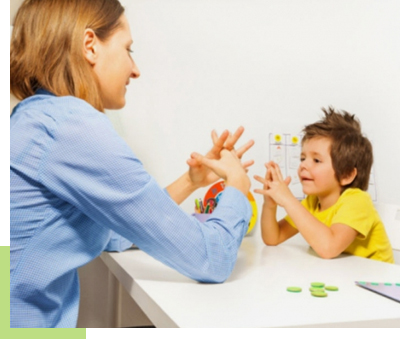The short answer is YES, and here’s why!
Autism Spectrum Disorder is a complex development condition with challenges in social interaction, speech and nonverbal communication, and restricted/repetitive behaviors. There is a wide range of severity among individuals and the effects of ASD vary greatly among families. ASD is by nature a communication disorder that perplexes many people. Communication is the means with which humans connect with one another. It is the basis of the parent-child bonding experience. When this foundation is broken, it can result in lack of functional communication and atypical behaviors which make everyday living challenging for the average family.
By considering the following factors, families can ensure a successful outcome with online speech therapy:
Parent Coaching – By engaging in online speech therapy, caregivers of children with ASD have the opportunity to learn how to engage with their children. The SLP can work closely with the family to develop a plan of care in which the family learns strategies and activities to elicit functional communication. The SLP has the benefit of working with the parent in their natural environment of the home. Also, parents are the child’s primary educators from birth and it benefits the child greatly when their parents are reinforcing the same strategies taught to them by their SLP round the clock.
Sensory Input – Many individuals with autism have a difficult time processing the sensory information they get from their environment. By making adjustments to visual, auditory and tactile cues that the child receives in the environment, the child’s attention span and capacity to learn can improve immensely. Simple adjustments such as adjusting the brightness of the lighting or adjusting the volume to a video can go a long way to improving the quality of an online therapy session.
Use Real Objects – It is a misconception that online therapy can only utilize digital materials. Young children in general, especially children with ASD, will benefit greatly from the use of real objects in their environment. This type of concrete learning lends itself to the development of functional communication during routine activities everyday such as mealtimes. Your child’s SLP can teach you strategies on how to use toys, books, and everyday objects in your home for language expansion.
Movement – Another myth about online therapy is that a child needs to sit and attend in front of the computer for the entire duration of the therapy session. This is completely false as that is not developmentally appropriate for most children. Incorporating movements into a language activity such as singing “Row, Row, Row Your Boat” while having the child motion and rock their body back and forth during the therapy sessions can simultaneously improve a child’s attention while improving their capacity to learn language.
In conclusion, online speech therapy is a vehicle through which families can gain access to a skilled SLP who can work with the unique needs of their child with ASD. By providing online speech therapy services in the home, the family can gain valuable insights about how to reinforce strategies in an effective way which in turn can improve communication exponentially.


